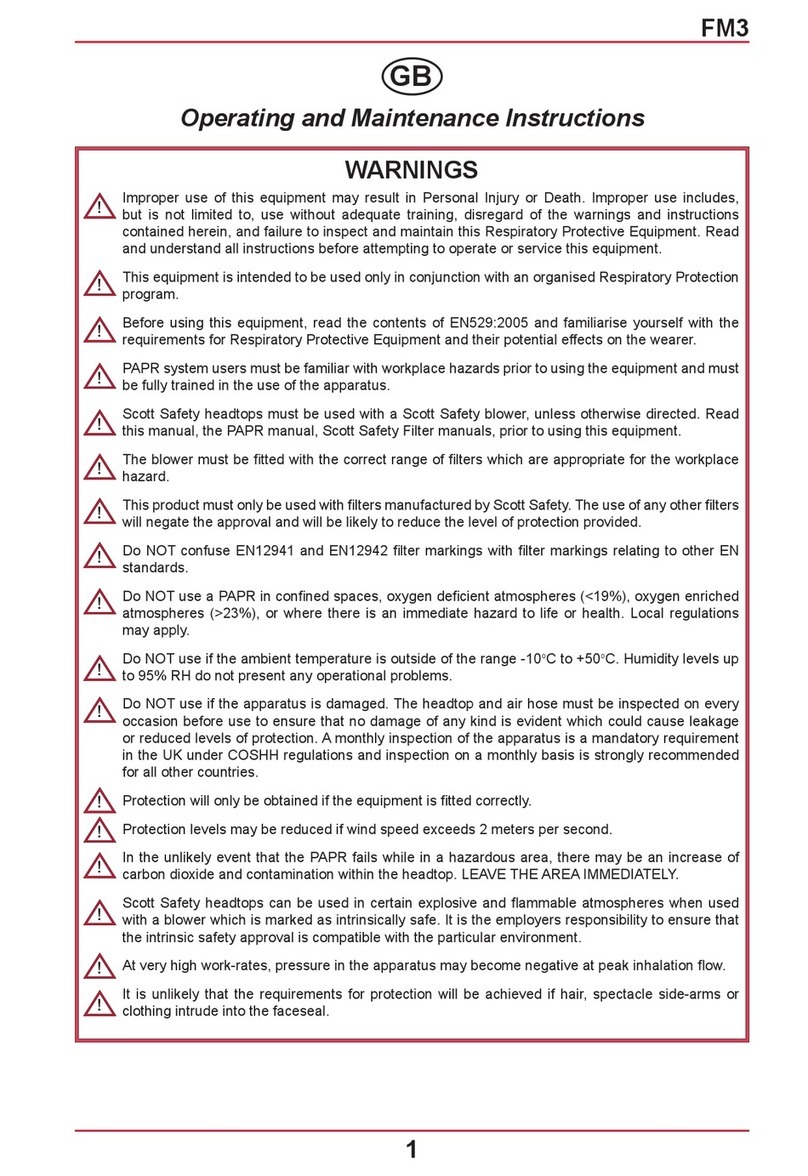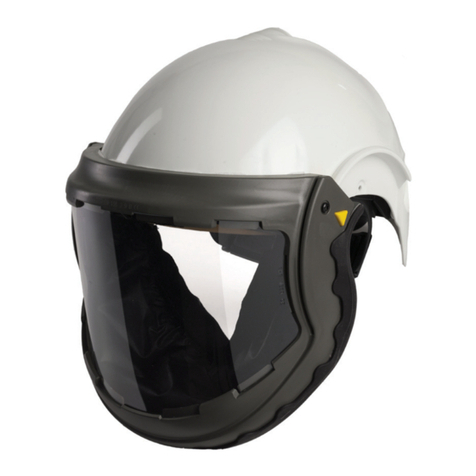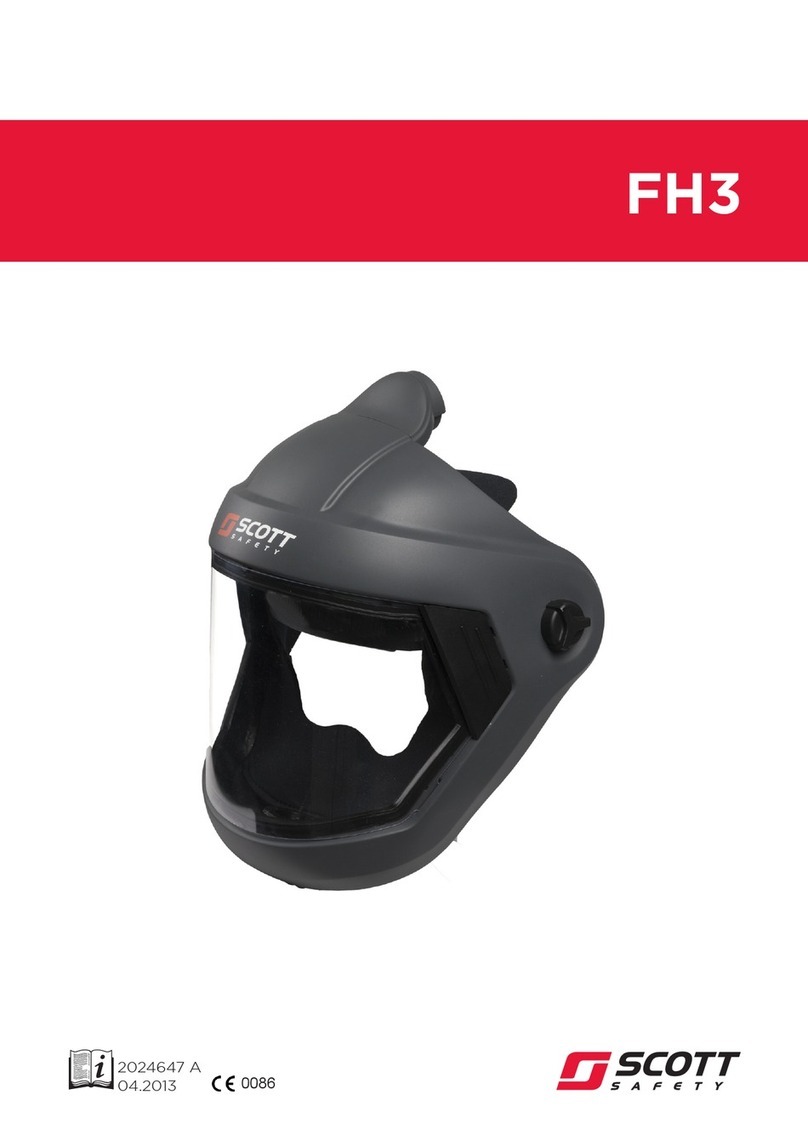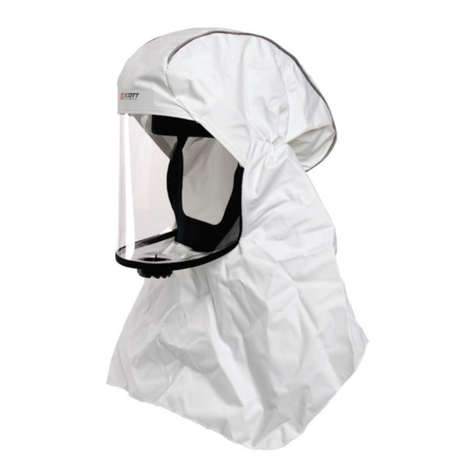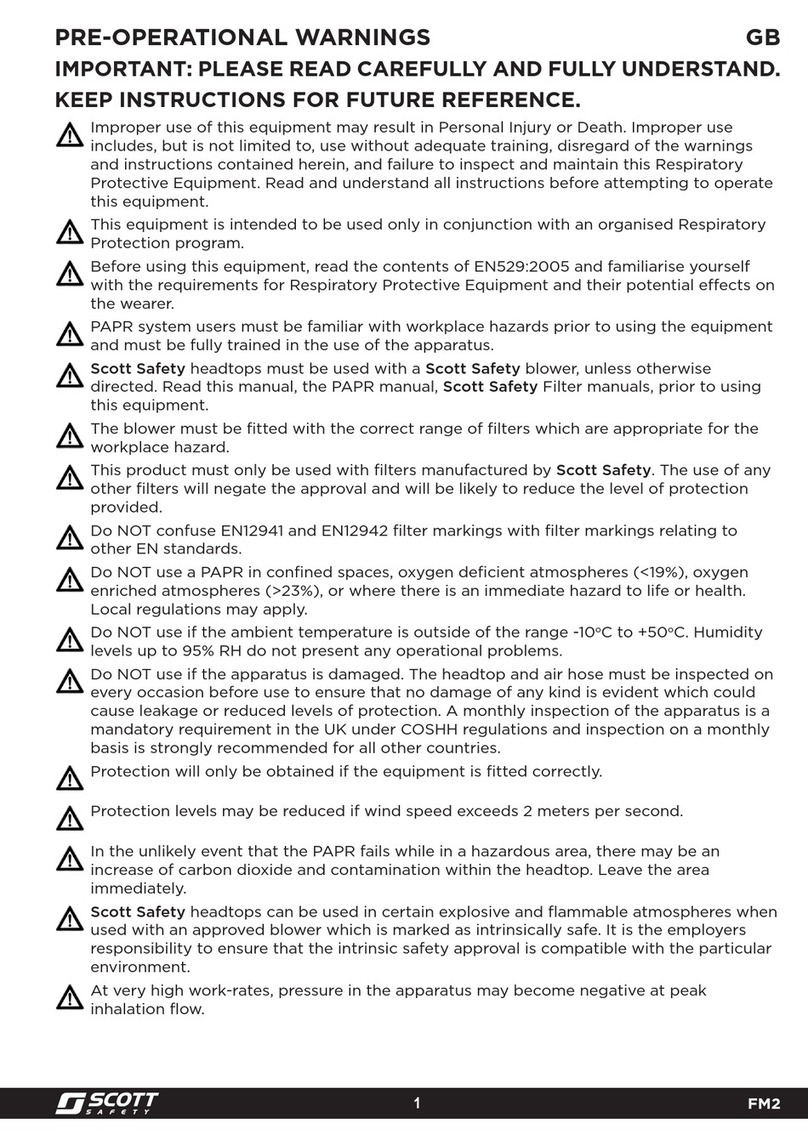
8
FH1, FH2 & FH21
STORAGE
Once all the components are clean and dry
store in a clean environment.
SPARES
Replacement parts and accessories may
be ordered through Scott Safety customer
services. The department can also provide
general information on other Scott Safety
products.
Scott Safety
Pimbo Road, West Pimbo,
Skelmersdale, Lancashire,
WN8 9RA, England
www.scottsafety.com
Tel: +44 (0) 1695 711711
Fax: +44 (0) 1695 711775
WARRANTY
The products manufactured at our factories
in Skelmersdale and Vaasa carry a warranty
of 12 months (unless stated otherwise).
This includes parts, labour and return to site
The warranty period runs from the date of
purchase by the end user.
These products are warranted to be free
from defects in materials and workmanship
at the time of delivery. Scott Safety will be
under no liability for any defect arising from
wilful damage, negligence, abnormal working
conditions, failure to follow the original
manufacturer’s instructions, misuse or
unauthorised alteration or repair.
Evidence of purchase date will need to be
produced for any claims arising during the
warranty period. All warranty claims must
be directed through Scott Safety customer
services and in accordance with our sales
return procedure.
MAINTENANCE
Regular and scheduled maintenance is
essential for the integrity of the equipment.
As well as the pre-use and storage checks
the apparatus must be checked on a monthly
basis, a service should be performed annually
by a qualifi ed service and maintenance
operative.
A regular monthly maintenance schedule is
performed as per the pre-use checks which
includes a thorough visual of all components.
Carry out a thorough inspection of all
component parts before and after each
occasion of use.
Pay particular attention on the headtops to
the exhalation valve and the insertion point of
the blower assembly hose.
The exhalation valve on the headtops
must be replaced annually regardless of
the condition.
In storage, exhalation valves have a shelf life
of fi ve years, after which time they should be
discarded.
Exhalation valves are marked with a code
indicating the year of manufacture. The code
‘07’ corresponds to the year 2007 and a dot
is added each year thereafter. The code ‘07•’
(notice the dot after the 7) indicates the year
2008.
INSPECTION DETAILS
Record test and maintenance details on the
inspection sheet provided at the rear of this
manual.
Information recorded usually includes:
• Name of employer responsible for the
apparatus
• Make, model number or identifi cation
mark of the apparatus, together with a
description of any distinguishing features
• Date of inspection/maintenance
together with name, signature or unique
identifi cation mark of the examiner
• Condition of the apparatus, details of
any defects found and any remedial
action taken
